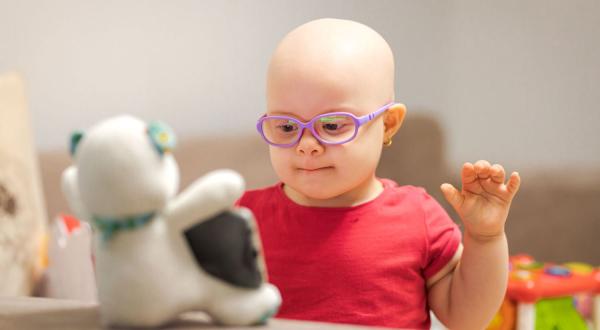RSU Researcher Inese Gobiņa: Pain is Subjective
From 2018 to 2019, the article "Prevalence of self-reported chronic pain among adolescents: Evidence from 42 countries and regions” by Assoc. Prof. Inese Gobiņa, a leading researcher at the Rīga Stradiņš University (RSU) Institute of Public Health, was in the top 10% of the most downloaded articles in the internationally acclaimed European Journal of Pain. The journal is published by the European Pain Federation and is a peer-reviewed journal recognised by pain specialists and researchers all over the world.
Apart from being pleasantly surprised Gobiņa sees this as proof of RSU researchers’ international success.
You cannot touch, or measure pain
Inese Gobiņa, a lecturer at the RSU Department of Public Health and Epidemiology, is an expert in public health. She has a particular interest in the epidemiology of pain and adolescent health issues. Chronic pain among adolescents was Gobiņa's chosen research topic already during her doctoral studies. Pain has been researched extensively within medical fields, but comparatively less when it comes to epidemiological studies particularly regarding adolescents. Gobiņa jokingly says that perhaps it would be "more prestigious” to study the epidemiology of cancer or diabetes.
The "right" to research pain often has to be defended on a local and international level. "You cannot touch, observe or measure pain directly. This poses a significant challenge from the viewpoint of research.”
Assoc. Prof. Inese Gobiņa
The European Pain Federation has recognised that pain is a subjective phenomenon, a disease in its own right and not only a symptom of other diseases.
Pain places an immense burden on individuals and society as a whole
The Associate Professor explains that pain is widespread in society with approximately 30% of adults suffering from chronic pain. Even though pain is not lethal for the majority of people, it causes suffering and lowers quality of life.
Data acquired from the factor "years lived with disability” shows that one of the greatest burdens on society globally is caused by headache and lower back pain (Lancet, 2018). Pain is however not only a personal problem as it causes direct or indirect damage to family members and employers. On an economic level it also affects the social budget and requires substantial healthcare resources. These are only some of the arguments that convinced Gobiņa of the necessity and topicality of pain research.
Pain is common among adolescents
Studies show that for a large number of adults chronic pain already started in adolescence. After a detailed examination of publications and by drawing conclusions from systematic reviews, Gobiņa came to the conclusion that there is an insufficient amount of evidence-based information on adolescents.
Gobiņa has been participating in the study "Health Behaviour among School-aged Children" for many years. This is a project supported by the World Health Organisation with as many as 50 countries taking part. All the participating countries use a standardised methodology, which allows comparing data from different countries. The results from the data analysis shows that the prevalence of chronic pain in the adolescent population is high. Specific complaints (like headaches, stomach aches, or back aches) are relatively less frequent and there are significant differences in terms of how prevalent such pain is among adolescents from different gender and age groups. Multiple pains, meaning repeated complaints about simultaneous pain in at least two places, are much more common and the prevalence among adolescents ranges from 13% in Armenia up to 34% in Israel. In all the countries, multiple pains are more often reported by girls and become more frequent during adolescence.
Pain is a problem in its own right
According to Gobiņa, there is often more interest in specific sites of pain, for example studying migraines or lower back pain. This does not however provide the opportunity to analyse combinations of correlating pain, or the link between different pains.
In addition, the high prevalence of correlating pain combinations needs to be taken into account in pain prevention and the treatment of children and adolescents. Frequent and repeated complaints about headaches or stomach aches are often treated in isolation and separately by a neurologist, or a gastroenterologist rather than by a general practitioner, a paediatrician, or an algologist who would be able to carry out a wider examination of the patient's health history and would decide on an overall pain management strategy.
For the majority of adolescents repeated complaints about pain is a problem in its own right and it is relatively rare that the pain can be explained by another "serious ailment”.
Strategies involving lifestyle, or changes to patients' daily routine, like sleep hygiene, changes in eating habits, and receiving emotional support, can be sufficiently effective for pain prevention, control, and management.
Adolescents who have repeated complaints about pain are not a homogeneous group and researchers still have a lot of work to do to determine why pain becomes chronic for some adolescents, and has a significant impact on their daily activities and quality of life, while other teenagers are able to cope with the discomfort caused by pain.
Despite being widespread, pain is a problem that can be solved provided that its biopsychosocial and subjective nature is taken into consideration.
Related news
 RSU researchers explain how digital technologies help paediatric oncology patientsRSU in the news, Consolidation, Research
RSU researchers explain how digital technologies help paediatric oncology patientsRSU in the news, Consolidation, Research



